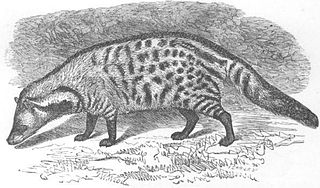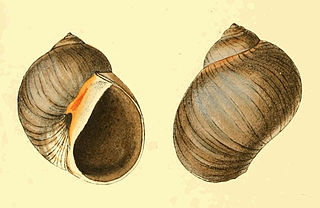This article needs an appropriate taxobox. |
Aspidiphorus is a genus of beetles belonging to the family Sphindidae. [1]
The genus was first described by Ziegler in 1821. [1]
Synonym:
- Coniporus Thomson, 1859 [1]
Species:
This article needs an appropriate taxobox. |
Aspidiphorus is a genus of beetles belonging to the family Sphindidae. [1]
The genus was first described by Ziegler in 1821. [1]
Synonym:
Species:

William IV was King of the United Kingdom of Great Britain and Ireland and King of Hanover from 26 June 1830 until his death in 1837. The third son of George III, William succeeded his elder brother George IV, becoming the last king and penultimate monarch of Britain's House of Hanover.

Manidae is the only extant family of pangolins from superfamily Manoidea. This family comprises three genera, as well as extinct Fayum pangolin.

Zanclodon is an extinct genus of archosauriform found in Middle Triassic deposits in southern Germany.

Gracillariidae is an important family of insects in the order Lepidoptera and the principal family of leaf miners that includes several economic, horticultural or recently invasive pest species such as the horse-chestnut leaf miner, Cameraria ohridella.

Iberus is a genus of air-breathing land snails, terrestrial pulmonate gastropod mollusks in the subfamily Helicinae of the family Helicidae.

Sven Nilsson was a Swedish zoologist and archaeologist.

Viverra is a mammalian genus that was first nominated and described by Carl Linnaeus in 1758 as comprising several species including the large Indian civet. The genus was subordinated to the viverrid family by John Edward Gray in 1821.

Nyctophilus is a genus of the vespertilionids or vesper bats. They are often termed Australian big-eared bats or long-eared bats, as the length of their ears often greatly exceeds that of the head. This genus occurs in the New Guinean-Australian region.

Periphanes is a monotypic moth genus of the family Noctuidae first described by Jacob Hübner in 1821. Its only species, Periphanes delphinii, the pease blossom, was first described by Carl Linnaeus in his 1758 10th edition of Systema Naturae. It can be found from Afghanistan and the steppe areas of Central Asia and Anatolia up to the area surrounding the Mediterranean Sea and north-western Africa.

Imbricaria is a genus of sea snails, marine gastropod mollusk in the family Mitridae, the miters or miter snails.
Miniopterus zapfei is a fossil bat in the genus Miniopterus from the middle Miocene of France. First described in 2002, it is known only from the site of La Grive M, where it occurs with another fossil Miniopterus species, the smaller and more common Miniopterus fossilis. M. zapfei is known from five mandibles and an isolated fourth upper premolar (P4). The fourth lower premolar is more slender than in M. fossilis and the cingulum shelf surrounding the P4 is less well-developed than in living Miniopterus. The length of the first lower molar is 1.57 to 1.60 mm.
Miniopterus tao is a fossil bat in the genus Miniopterus from the Pleistocene of Zhoukoudian in China. It is known from a number of mandibles, which were initially identified as the living species Miniopterus schreibersii in 1963 before being recognized as a separate species, M. tao, in 1986. Miniopterus tao is larger than living M. schreibersii and has more closely spaced lower premolars and more robust talonids on the lower molars. The back part of the mandible is relatively low and on it, the coronoid and condyloid processes are about equally high. The average length of the mandible is 12.0 mm.

Conuber is a genus of predatory sea snails, marine gastropod mollusks in the family Naticidae, the moon snails.

Lithoglyphus is a genus of freshwater snails with gills and an operculum, a gastropod mollusk in the family Lithoglyphidae.

The Snowmastodon site, also known as the Ziegler Reservoir fossil site, is the location of an important Ice Age fossil excavation near Snowmass Village, Colorado. Fossils were first discovered on October 14, 2010 during the construction of a 5 hectare reservoir to supply Snowmass Village with water. Over the subsequent weeks, after an agreement had been reached to allow paleontological excavation, crews from the Denver Museum of Nature & Science and the U.S. Geological Survey worked along with the construction crews as more fossil material was uncovered. The site closed for five months over the winter, reopening May 15, 2011. Between May 15 and July 4, 2011, crews from the Denver Museum of Nature & Science conducted a large scale fossil excavation alongside construction crews building a dam for the reservoir. In total over 36,000 vertebrate fossils, more than 100 species of fossil invertebrates and over 100 species of fossil plants were found in sediments deposited by an alpine lake during the last interglacial period.
Clydagnathus is a genus of conodonts in the family Cavusgnathidae. Species are known from the Carboniferous of India and the Devonian of Morocco.

Ellescus is a genus of true weevils in the beetle family Curculionidae. There are about 16 described species in Ellescus.

Dinera carinifrons is a species of fly in the family Tachinidae. It is found in Europe and Asia.

Triphyllus is a genus of beetles belonging to the family Mycetophagidae.
Aspidophorus may refer to: